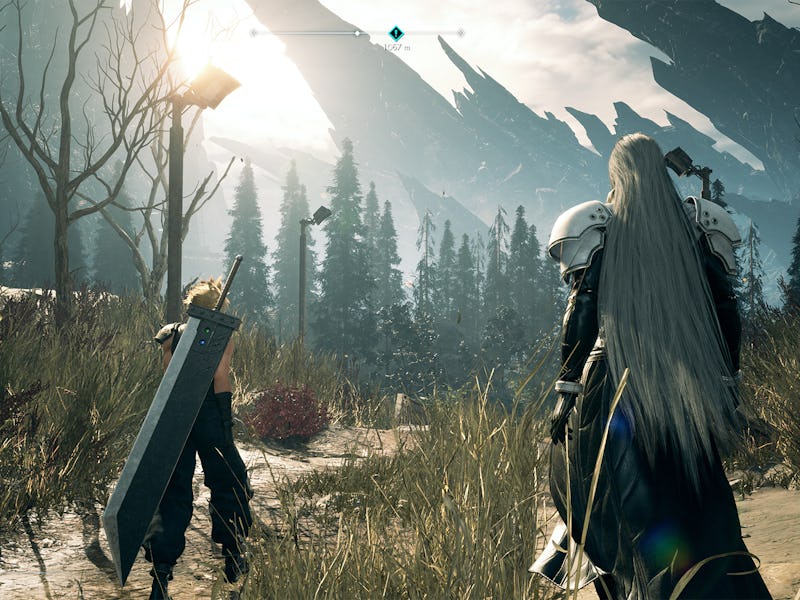FF7 Rebirth Could Improve the Greatest Final Fantasy Mechanic Ever
Tell ‘em what to do.

Final Fantasy VII Remake was a groundbreaking recreation and reinterpretation of one of the greatest games in history. Three years later, it still stands out as the leader of the pack amid a recent wave for AAA remakes.
The second chapter of the Remake trilogy, Final Fantasy VII Rebirth, will be another ambitious reinvention. Combat designer Satoru Koyama wants to continue the trilogy’s trend of improving upon the original, especially in combat. To do that he is drawing upon one of the best parts of Final Fantasy XII — the gambit system
A groundbreaking element of Final Fantasy XII was its combat. Since its inception, the Final Fantasy franchise had been centered around turn-based combat in some form or another. The only exception prior to Final Fantasy XII was Final Fantasy XI, the series’ first MMO. Final Fantasy XII bucked the turn-based combat in favor of a real-time combat system more in line with the style of play you would find in an MMO, only for a single-player experience.
The gambit system lets players finely tune AI-controlled NPCs in combat.
The game was still party based so the development team needed to come up with a solution for controlling multiple characters in real time. The answer was gambits. The system lets players create simple if-then lists for individual party members that controlled how their AI behaved in combat. You could tell them to prioritize damage unless another party member dipped below a certain health percentage or to use items at a given moment. It allowed for a surprising depth of control in combat. To this day it is an ingenious piece of combat design.
Final Fantasy VII Remake made the drastic change of switching from turn-based combat to real-time action-oriented combat. One of the biggest influences on the combat became Final Fantasy XIII’s stagger system. Looking forward to Rebirth, it seems the remake trilogy will continue to pull on the franchise's past.
In the Remake Ultimania, Koyoma is quoted as saying, “I’d like to create an AI that can juggle a variety of techniques and magic. My goal is to surpass Final Fantasy XII’s Gambit system.”
This makes sense considering that Final Fantasy VII Rebirth will increase the number of party members in the story and combat. Yuffie, Cid, Cait Sith, Red XII, and Vincent Valentine are all likely to join Cloud and Co. While it will still be possible to transfer between characters to control them and their unique fighting styles, it does become more complicated to give supporting commands to so many characters.
Final Fantasy 7 Remake’s combat system merges action-oriented fights with the ability to command party members, but it is fairly basic.
In Remake, the command system was fairly basic, the game was more concerned with encouraging players to take direct control over party members. However, the AI-controlled party members only did basic actions. The benefit of riffing off the gambit system is that it allows for more in-depth control and customization of how every single member of a party acts when AI-controlled.
The gambit system helps bridge action-oriented combat with more strategic battle planning but also acts as an accessibility solution. “I’d also like to focus more energy into aspects that support player control, such as Classic Mode, where characters fight automatically,” said Koyoma, “I think it’s a shame when people can’t play a game they’re interested in just because they aren’t skilled with action-oriented mechanics”.
Final Fantasy XVI has a similar thought about the player base with its action-forward combat. Both Final Fantasy VII Rebirth and Final Fantasy XVI’s combat designers are hoping to create interesting solutions that aren’t outright “easy modes.” The gambit system’s unique approach to combat helps players delineate tasks prior to the heat of battle. The potential of the gambit system in Final Fantasy VII Rebirth is nearly limitless.